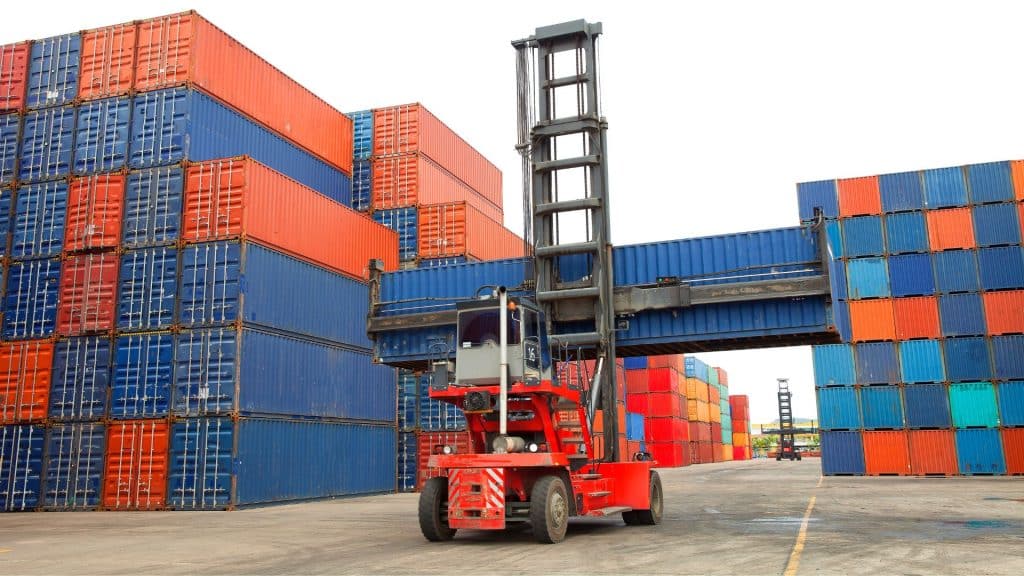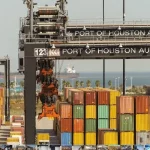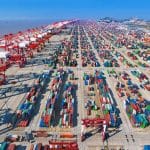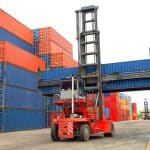Ship that caused Baltimore bridge collapse moved back to port.
Almost two months after colliding with Baltimore’s Francis Scott Key Bridge, the MV Dali cargo ship was hauled away from the site and taken to shore Monday. The Unified Command, a group of local and federal agencies managing the operation, said the Dali was floated around 7 a.m. ET, and tugboards slowly moved it to a local marine terminal. The Dali will spend several weeks getting temporary repairs at the terminal and then will be moved to a shipyard for more substantial repairs, authorities said. Federal investigators released a report last week that said the ship went through multiple power failures before colliding with the bridge. Authorities have opened four temporary channels on the Patapsco River leading to the harbor in response to the incident, allowing shipping operations to continue.
Hapag-Lloyd raises 2024 guidance on Red Sea rate support
Hapag-Lloyd’s terminal & infrastructure segment booked revenues of $107m, up from $6m in Q1 2023 and EBIT dropped by $1m on-year to $18m, although the figures are limited in their scope for comparison as the new segment was only introduced in the second half of 2023.With a strong start to the year, the board’s EBITDA forecast for 2024 was revised upwards to $2.2bn to $3.3bn from $1,1bn to $3.3bn; EBIT was revised to $0 to $1.1bn from -$1.1bn to $1.1bn. 2024 earnings are still expected to be front-loaded in the year, although geopolitical uncertainty brings a high degree of uncertainty to the outlook. “Going forward, we must keep a close eye on our costs, and we will continue the implementation of our Strategy 2030 – with main focus on our decarbonisation initiatives and our promise to be the undisputed number one for quality for our customers,” said Rolf Habben Jansen, CEO of Hapag-Lloyd AG.

Hamburg throughput falls on lower liquid bulk volumes
China remained the largest trade partner for Hamburg, rising 2.9% to 536,000 teu. Despite the increases in container volumes, total seaborne cargo throughput of 27.4m tonnes for the first quarter was down 3.3% on-year. “The main reason for this is a lower turnover in bulk goods at 8.2m tonnes. This represents a decline of 11.9% compared to the previous year. Noteworthy is the decrease in liquid cargo, which is attributable to currently high inventory levels,” said Port of Hamburg. The port reported higher calls from container ships with a capacity between 4,000 and 10,000 teu, while the number of calls from ships of over 10,000 teu fell, in part due to the longer sailing times on the Cape of Good Hope route.
Cosco launches new China – South America East Coast service
A new service from the northern Chinese port of Tianjin to the East Coast of South America (ECSA) began operating last week to facilitate trade between China and countries in that region. It will reduce sailing from 54 to 40 days and increase reefer shipping capacity. The shipping route connecting China and South America – the longest across the Pacific Ocean – will be operated by Cosco Shipping, connecting the port of Tianjin with several ports in South America, including Rio de Janeiro, Santos, Itapoá and Navegantes in Brazil. Cosco Shipping will deploy 12 vessels with a capacity of 14,000 teu each on the service, with weekly sailings. China has been Brazil’s largest trading partner for 15 consecutive years, and Brazil is also China’s largest trading partner in Latin America and direct investment destination.
.




